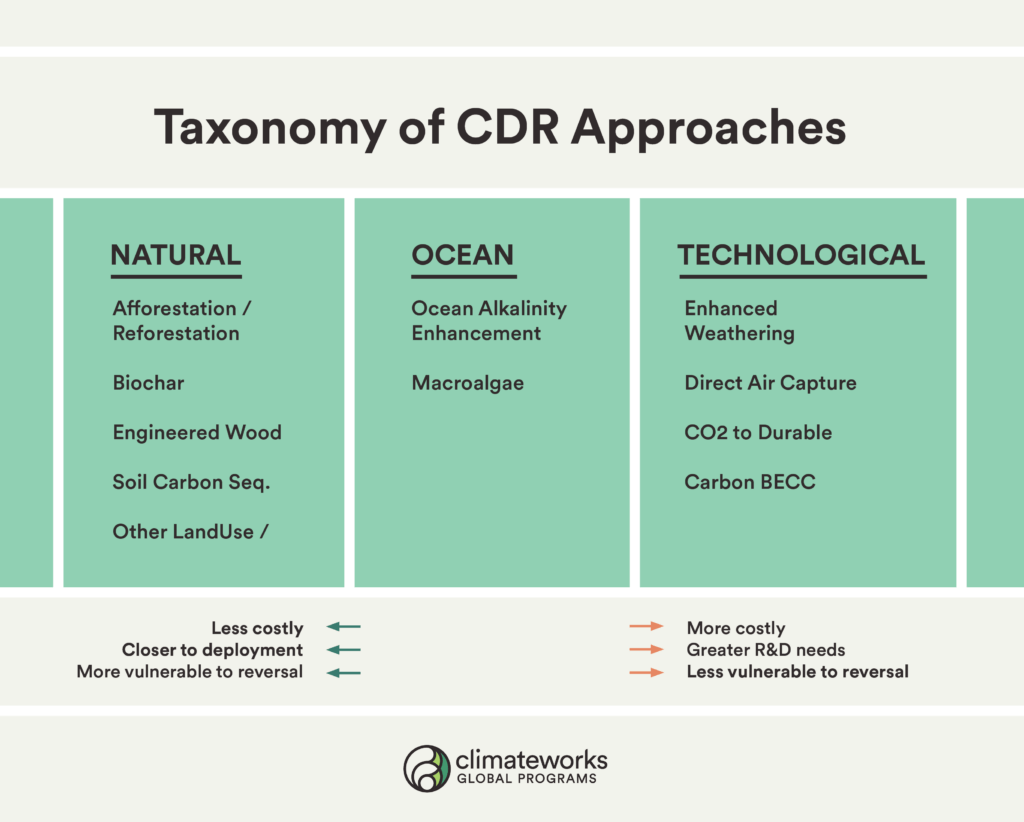CDR is a must-have to solve the climate crisis.
In addition to slashing greenhouse gas emissions, carbon dioxide (CO2) removal is needed in order to meet the goals of the Paris Agreement and limit warming to below 1.5° C.
Our CDR Program
We have long relied on the land and oceans to absorb excess CO2 in the atmosphere, but they are now facing the limits in how much they can absorb. With the threat of increasing wildfires and ocean acidification, carbon removal approaches offer a solution to support land and ocean ecosystems and scale up the amount of carbon removed from the atmosphere.
Our CDR Program is the first philanthropic initiative dedicated to supporting and advancing a variety of carbon removal approaches to responsibly and readily remove carbon, restore the climate, and protect all living beings for generations to come.
As pioneers of CDR-focused philanthropy, we are dedicated to providing crucial funding, advancing research and addressing knowledge gaps in science, creating and strengthening the CDR community and field, and guiding responsible and necessary processes for scaling these approaches and technologies.

Natural removal
Natural removal harnesses the power of plants and trees to remove CO2 from the air and store it in wood and soil. While these techniques are safe and beneficial, there are some limitations to natural removal as it does require land that might otherwise be used for conservation or for food and when trees die, are logged, or burn, the CO2 they store is released. Some of the logged trees can be used to make super-strong building materials, further displacing cement and steel. The CDR Program is supporting the scaling up of the natural removal opportunities that are rooted in communities, cost-effective, and have positive co-benefits.
Technological removal
These approaches mimic natural processes to take CO2 from the atmosphere. Direct air capture harnesses waste heat and renewable energy to extract CO2 from the atmosphere, similar to how trees sequester carbon. From there, the CO2 can be stored safely deep underground, or be made into durable materials, in place of emission-intensive components of cement. Recycled CO2 can also be made into carbon-neutral fuels that power long-haul flights, which will be challenging to decarbonize. The CDR Program supports research to understand the opportunities and challenges of scaling and deploying responsible technological removal opportunities to further drive down emissions.
Marine-based removal
Our oceans have absorbed up to one-third of excess carbon dioxide in the air, leading to warming and increased acidification, wreaking havoc on the marine ecosystem. Improving our understanding and facilitating the development of marine carbon removal mechanisms adds an important tool in our climate action toolbox. The CDR Program aims to support the development of marine CDR opportunities by supporting the research and community-building needed to bring to light the ocean’s potential role in CO2 removal. Learn more about our marine CDR initiative.
